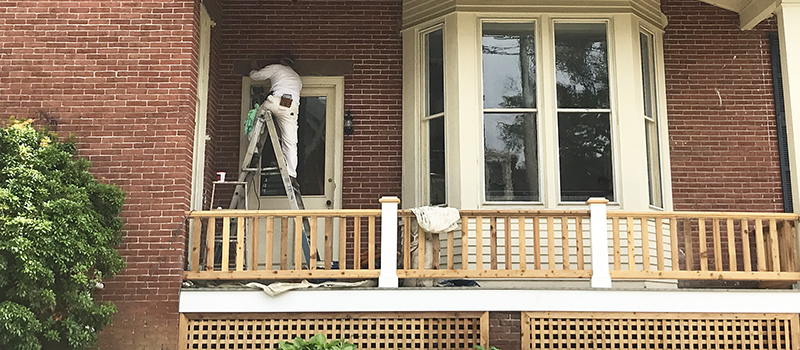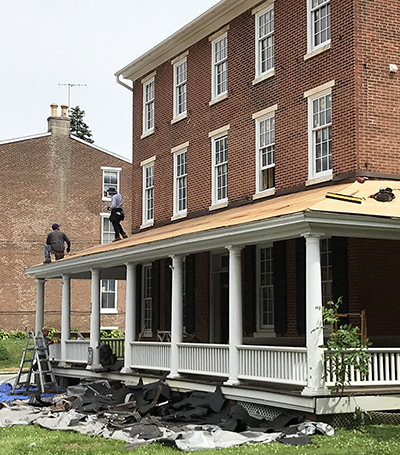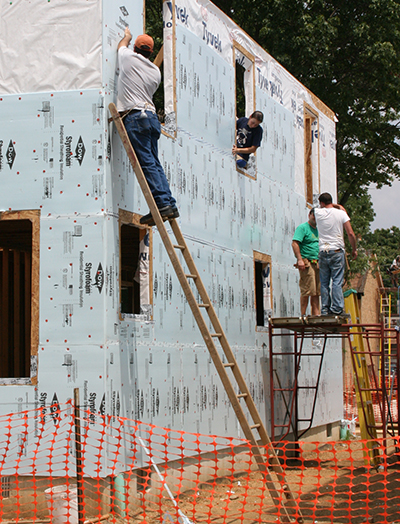The rehabilitation of existing homes, instead of full reconstruction, keeps the property consistent with the character of the surrounding neighborhood.
How it Works
Promoting the rehabilitation of existing housing not only helps to maintain housing that is affordable for all socioeconomic sectors, it also supports broader revitalization goals. Rehabilitation efforts can stabilize or increase property values and create a stronger sense of community and civic pride.
Benefits
Houses represent some of the most enduring elements of the built environment, and their long-term maintenance is an essential element of the high quality of life experienced countywide. Additionally, much of the moderately-priced housing countywide is older, and it is critical these homes are properly maintained and remain within the supply of affordable housing.
Affordable Housing Preservation
Home rehabilitation preserves the existing housing stock, helping to maintain the availability of affordable housing.
Community Development
Home rehabilitation can spur redevelopment and reinvestment in distressed communities and improves neighborhoods.
Community Building
Rehabilitation of substandard housing improves the quality of life for individuals and families.
Aging in Place
Appropriate rehabilitating of homes can allow senior citizens to age in place, stay in their neighborhood, and remain in proximity to their existing support system.
Energy Conservation
Home rehabilitation inherently conserves energy because it promotes the continued use of existing buildings and the preservation of the embodied energy that is captured in the structure (such as the energy used to create the timber, glass, concrete, steel, metals, etc. that form the structure). It also allows the use of energy efficient materials and designs in rehabilitation projects.
The rehabilitation of historic homes is essential for their long-term viability and continued use as contemporary residences.
Get Started
Public, private, and nonprofit sectors can work together to make housing rehabilitation services available to those who need them countywide. Housing rehabilitation can further encourage and complement other community development activities, including streetscape improvements, pedestrian circulation amenities, infrastructure upgrades, community parks cleanup, and rehabilitation of neighboring properties. Municipalities can promote housing rehabilitation in a number of ways including:
- Provide information to low- and moderate-income homeowners about available rehabilitation services and connect those in need to available resources.
- Reduce permit fees and simplify the inspection processes for housing rehabilitation efforts to encourage homeowners to take on and complete projects.
- Consider a municipally run rehabilitation program. These programs should address specific municipal needs and can range from commercial façade improvements to lead remediation.
- Promote the use of the Conservatorship Law to more quickly address blighted and abandoned properties.
- Amend municipal codes and ordinances to encourage energy-efficiency and green construction as applied to rehabilitation projects.
- Host a nonprofit organization to offer home maintenance and repair workshops at the municipal building.
Considerations
Regulatory Barriers
Regulations may add unnecessary time and expense to rehabilitation projects. Examples of potential barriers include: requirements for conditional use or special exception approval for expansion of nonconforming properties, the need for multiple permits and their separate requirements and review processes, and specific design standards which might create difficulties in securing the approved materials for construction.
Age and Condition
The condition, age and original construction methods must be appropriately handled to successfully rehabilitate existing housing stock.
Limited Resources
Homeowners and landlords may not have sufficient financial resources to meet home maintenance and rehabilitation needs.
In addition to construction of new homes, Habitat for Humanity also rehabilitates existing homes for use as affordably priced housing.
Examples
There are many organizations in Chester County that provide housing rehabilitation services. Individuals interested in housing rehabilitation can refer to the following websites:
Good Neighbors Inc.
Good Neighbors Inc., an organization that provides home repairs and financial guidance to homeowners who lack the physical or financial means to make necessary home repairs in southern Chester County.
Good Works, Inc.
Good Works, Inc., a nonprofit organization dedicated to repairing homes for low-income homeowners in Chester County.
Habitat for Humanity of Chester County
Habitat for Humanity of Chester County, a nonprofit organization that has built or renovated over 140 homes for low-income families in need of decent, affordable housing in Chester County.
Housing Partnership of Chester County
Housing Partnership of Chester County, a nonprofit organization that provides basic home maintenance, repairs, and access modifications for qualified residents of Chester County, 65 years of age and older.
Regional Housing Legal Services (RHLS)
Regional Housing Legal Services (RHLS), has developed an Implementation and Best Practices Manual to serve as guidance for local governments and nonprofits to utilize the Pennsylvania Conservatorship Law (Act 135) to remediate blighted properties without using public resources.





